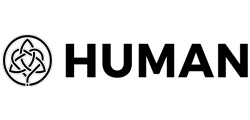The Looking Inside, Looking Outside source method is a way to make sense of the relationships between the ideas and imaginings of the inner world and their connection to the data and stories from the outer world.
OVERVIEW
CONCEPT
The Looking Inside, Looking Outside concept is based on making sense of the perceived differences between what people think and imagine in their inner worlds, and the actions they take and the outcomes they create in their outer worlds. Often, people experience a divergence, sometimes a large divergence, between what they think and feel should be happening, and what actually is happening. The reason for this is that we have no direct connection between our inner worlds and outer worlds. Instead, we have to rely on our perceptions of the outer world and effectively use our inner worlds to run simulations of what we perceive to be happening in the outer world. Looking Inside, Looking Outside provides the opportunity to explore those divergences and differences between what is happening inside and what is happening outside.
PURPOSE
The purpose of Looking Inside, Looking Outside is to work with the divergences and differences between what we think and feel in our inner worlds, and the data and realities of our outer worlds. The divergences between what is happening in our inner worlds and what is happening and outer worlds can result in feelings of unworthiness and incompetence, as described by impostor syndrome. They can also result in the overconfidence and assumed expertise of Dunning-Kruger. Looking Inside, Looking Outside can help people to resolve the tension between how they are currently feeling inside and the image that they feel they have to present to the people around them and the situation that they are in. By becoming more aware of the choices they have in presenting their self-image, people naturally have the opportunity to behave more authentically and in a more focused and congruent manner.
USES
- • To identify internal and external factors in a situation
- • To develop a coherent self-image
- • To resolve developmental tensions
- • To compare it self-image to the perceptions of others
- • To resolve impostor syndrome
- • To clarify ideas and put them into action
- • To explore potential for an individual can become
- • To move beyond habituated self image
- • To identify and action developmental potential
LEARN HOW TO USE LOOKING INSIDE, LOOKING OUTSIDE
To learn how to use Looking Inside, Looking Outside in your work, contact us hello@human.associates

